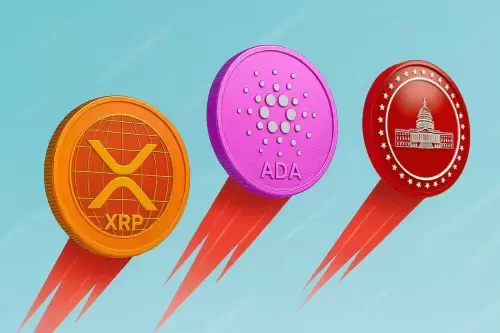 |
|
 |
|
 |
|
 |
|
 |
|
 |
|
 |
|
 |
|
 |
|
 |
|
 |
|
 |
|
 |
|
 |
|
 |
|
Cryptocurrency News Articles
XRP Ledger (XRPL) Prepares to Launch Ethereum-Compatible Sidechain, Expanding Its Role in the Blockchain Ecosystem
Jun 12, 2025 at 02:10 pm
The XRP Ledger (XRPL) is set to redefine its role in the blockchain ecosystem with the upcoming launch of its Ethereum-compatible sidechain.

The XRP Ledger (XRPL) is set to redefine its role in the blockchain ecosystem with the upcoming launch of its Ethereum-compatible sidechain, scheduled for the second quarter of 2025. This development marks a significant milestone in bridging the gap between XRPL and Ethereum’s decentralized application (dApp) ecosystem.
The Ethereum-compatible sidechain, being developed by Ripple and Peersyst Technology, is a parallel blockchain designed to run Ethereum-based dApps and smart contracts using familiar tools like Solidity, MetaMask, and Truffle. It operates independently of the XRPL mainnet, ensuring that the core protocol remains optimized for payments while introducing new functionalities.
The sidechain boasts EVM compatibility for deploying Ethereum-based applications on XRPL, uses Wrapped XRP (wXRP) as the native gas token for transactions on the sidechain, and integrates the Axelar network for cross-chain communication. It also offers high performance with over 1,000 transactions per second and costs below $0.01, thanks to its Proof-of-Authority (PoA) consensus.
This integration is part of a broader initiative to expand the utility of the XRP Ledger and attract developers and investors from the broader crypto space.
The initiative aims to lower entry barriers for developers and expand the possibilities for DeFi applications, liquidity pools, and smart contract interactions. This move could have a significant impact on the XRP token as it introduces a new demand mechanism for the token used for transaction fees on the sidechain.
Activity on the sidechain’s testnet has already shown promising signs of developer interest, with 87 new entities, who had no prior involvement in the XRP ecosystem, contributing to the testnet. Projects like Strobe Finance, Vertex Protocol, and Secured Labs are among the early adopters, signaling robust ecosystem growth upon the mainnet’s release.
To ensure network integrity, the sidechain underwent a security audit by Informal Systems in February 2025, which identified and resolved one critical issue related to a Cosmos SDK module, while other findings were deemed low-risk.
The integration of the Axelar network as the exclusive bridge for asset transfers between XRPL and the sidechain is a pivotal feature. This architecture not only connects XRPL to Ethereum but also to over 69 other blockchain ecosystems, fostering a more interconnected and versatile blockchain environment.
The launch of the XRP Ledger’s Ethereum-compatible sidechain marks a pivotal moment in the cryptocurrency landscape. As the mainnet launch approaches in the second quarter of 2025, crypto investors and developers alike are eagerly anticipating the possibilities that this innovation will bring to the DeFi and Web3 realms.
Disclaimer:info@kdj.com
The information provided is not trading advice. kdj.com does not assume any responsibility for any investments made based on the information provided in this article. Cryptocurrencies are highly volatile and it is highly recommended that you invest with caution after thorough research!
If you believe that the content used on this website infringes your copyright, please contact us immediately (info@kdj.com) and we will delete it promptly.





























































